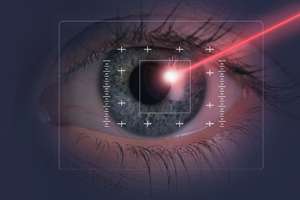Optics: Statistics light the way

Millions of years of evolution have molded our eyes into highly sensitive optical detectors, surpassing even many man-made devices. Now, Leonid Krivitsky and his co-workers at the A*STAR Data Storage Institute and the A*STAR Institute of Medical Biology, Singapore, have shown that the photoreceptor cells found in the retina are even sensitive to the statistical properties of light. This ability could be harnessed in 'bioquantum' interfaces, a novel class of optical devices that use biological systems to detect the quantum nature of light.
Light comprises discrete bundles of energy known as photons. A 40-Watt light bulb, for example, creates more than 1019 (a one followed by 19 zeros) visible photons every second. Nevertheless, attenuated sources that generate light pulses containing just a few photons are also useful. In such ultralow-intensity light pulses, the statistical distribution of photons emitted in a single pulse depends on the light source.
Warm light sources such as light-bulb filaments generate photons in bunches. Lasers, in contrast, create photons randomly—each is emitted independently of the next. Krivitsky and his co-workers experimentally demonstrated that rod photoreceptor cells in the eye can distinguish between pulses of light from either a laser or a thermal light based only on these differing distributions. "Showing that such cells can assess photon statistics provides hope for accessing the quantum properties of light using biodetectors," says Krivitsky.
Krivitsky and his team trapped a photoreceptor cell from a frog on the end of a suction pipette. Then they fired green-light laser pulses at the cell through an optical fiber. The same device could also imitate a thermal light source when they placed a rotating disk of ground glass and an aperture into the beam path.
They observed that rhodopsin molecules in the cell absorbed the incoming photons, which generated an ion current. The researchers amplified and measured this current as the average number of photons in each light pulse increased. They noticed a much sharper increase in detected current for the laser light than the pseudothermal pulses. This is because, while the average photon number is the same, an individual pseudothermal pulse was more likely to have a low number of photons. The photon distribution of the laser pulses, on the other hand, was much narrower.
The two types of photon emitters investigated in these experiments are examples of 'classical' light sources. "The next step is to investigate quantum light, such as pulses with a fixed number of photons," notes Krivitsky.
More information: Sim, N., Cheng, M. F., Bessarab, D., Jones, C. M. & Krivitsky, L. A. Measurement of photon statistics with live photoreceptor cells. Physical Review Letters 109, 113601 (2012). dx.doi.org/10.1103/PhysRevLett.109.113601
Journal information: Physical Review Letters





















